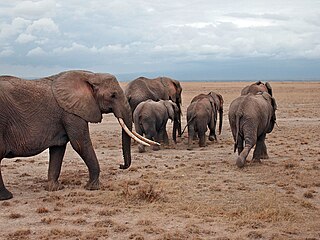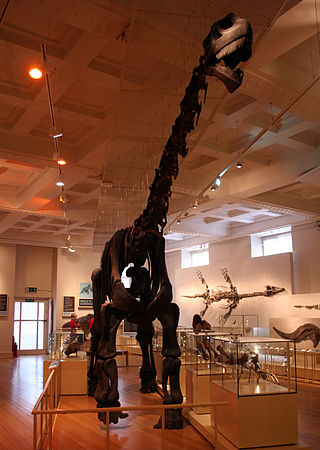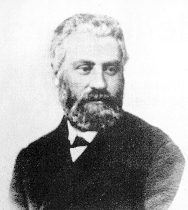Order is one of the eight major hierarchical taxonomic ranks in Linnaean taxonomy. It is classified between family and class. In biological classification, the order is a taxonomic rank used in the classification of organisms and recognized by the nomenclature codes. An immediately higher rank, superorder, is sometimes added directly above order, with suborder directly beneath order. An order can also be defined as a group of related families.

In biology, a taxon is a group of one or more populations of an organism or organisms seen by taxonomists to form a unit. Although neither is required, a taxon is usually known by a particular name and given a particular ranking, especially if and when it is accepted or becomes established. It is very common, however, for taxonomists to remain at odds over what belongs to a taxon and the criteria used for inclusion. If a taxon is given a formal scientific name, its use is then governed by one of the nomenclature codes specifying which scientific name is correct for a particular grouping.

The International Code of Nomenclature for algae, fungi, and plants is the set of rules and recommendations dealing with the formal botanical names that are given to plants, fungi and a few other groups of organisms, all those "traditionally treated as algae, fungi, or plants". It was formerly called the International Code of Botanical Nomenclature (ICBN); the name was changed at the International Botanical Congress in Melbourne in July 2011 as part of the Melbourne Code which replaced the Vienna Code of 2005.
In biological nomenclature, a syntype is any one of two or more biological types that is listed in a description of a taxon where no holotype was designated. Precise definitions of this and related terms for types have been established as part of the International Code of Zoological Nomenclature and the International Code of Nomenclature for algae, fungi, and plants.

Cetiosaurus meaning 'whale lizard', from the Greek keteios/κήτειος meaning 'sea monster' and sauros/σαυρος meaning 'lizard', is a genus of herbivorous sauropod dinosaur from the Middle Jurassic Period, living about 168 million years ago in what is now Europe.

Lapparentosaurus is a genus of sauropod dinosaur from the Middle Jurassic. Its fossils were found in Madagascar. The type species is L. madagascariensis.
The Aganane Formation is a Pliensbachian geologic formation in the Azilal Province, central Morocco, known mostly for its rich tracksites including footprints of thyreophoran, sauropod and theropod dinosaurs. This formation has been dated to the Pliensbachian stage of the Lower Jurassic, thanks to the find of the ammonite Arieticeras cf. algovianum, indicator of Middle Domerian=Uppermost Pliensbachian) in the upper zone, and lower delimitation by the foraminifers Mayncina termieri and Orbitopsella praecursor. The dinosaur tracksites are all located a few metres below the Pliensbachian-Toarcian limit, being coeval and connected with the lowermost layers of the continental Azilal Formation. The Aganane Formation was also coeval with the Jbel Taguendouft Formation and the Tamadout 1 Formation, all developed along a local "platform-furrow" in the Middle Atlas Mountains, that act as a barrier controlling the western border of the Jurassic Atlas Gulf. The nearshore sections, including both carbonate platforms and close to sea terrestrial facies where located on an isolated internal domain thanks to the control of the barrier, allowing the Aganane Formation to develop on a hot and humid climate, where a local algal marsh had intermittent progradations, intercalated with a layer of terrigenous continental origin. The ichnosites were developed in tidal flats and coastal deposits suitable to sea floodings.
Eoneustes is an extinct genus of metriorhynchoid crocodyliform from Middle Jurassic deposits of France. Eoneustes was a carnivore that lived in the oceans and spent much, if not all, its life out at sea.

Eugène Eudes-Deslongchamps was a French paleontologist and naturalist born in Caen, the son of paleontologist Jacques Amand Eudes-Deslongchamps (1794–1867). He died at Château Matthieu, Calvados.

Hilbrand Boschma was a Dutch zoologist and director of the Rijksmuseum of Natural History in Leiden.
Jules Haime was a French geologist, paleontologist and zoologist known for his research of coral.

Louis Édouard Gourdan de Fromentel was a French physician and paleontologist known for his study of fossil coral polyps and sponges.
Cavernularia elegans is a species of coral in the family Veretillidae found in the North Atlantic Ocean.
Codonosmilia is an extinct genus of stony corals.
Chorisastrea is an extinct genus of stony corals.

Jania rubens, the slender-beaded coral weed, is a species of red seaweeds. It is found in European waters.
Cerioheterastraea is an extinct genus of prehistoric stony corals in the extinct family Stylophyllidae. Species are from the Trias of China and the Russian Federation.

Narindasaurus is a genus of turiasaurian sauropod dinosaur from the Middle Jurassic Isalo III Formation of Madagascar. The type species, N. thevenini was formally described by Royo-Torres et al. in 2020. The holotype, which consists of one specimen, is currently stored at the Muséum national d’Histoire naturelle and has been since 1906 or 1907.
Toarcibatidae is a family of extinct rays that lived in the Early Jurassic in Europe and North America. It includes two genera, Cristabatis and Toarcibatis. This family was originally named "Archaeobatidae", but that name did not conform to the International Code of Zoological Nomenclature so it was replaced. Doliobatis was originally included in this family, but it has since been reassigned to Rhinobatidae.








